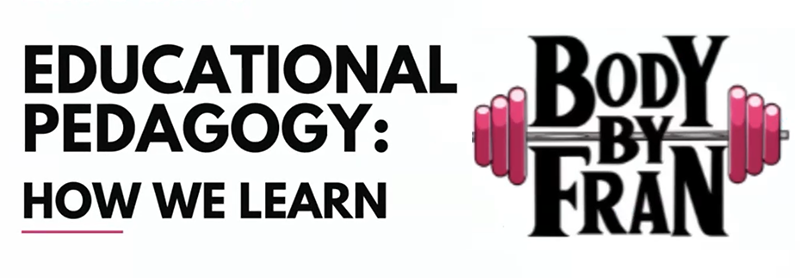[memberonly level=“Group Membership for Businesses of 2-5 individuals, Student, Individual or Solo-Preneur”] This workshop was…

How to provide constructive feedback
Receiving and giving feedback is an important part of being a pole teacher and pole business owner. There are many ways to provide non-constructive or damaging feedback that can negatively affect your current or future relationships with the people who work for you, work with you, or who may purchase your product or service.
Here are some tips for improving and providing constructive feedback, relevant in a pole business or pole teaching context.
Some feedback may be actively solicited, such as during an employee meeting or a customer survey, whereas other feedback, such as comments on a social media post, may be unsolicited. Always consider the context and the intention behind receiving feedback AND providing it.
Tip #1. If you do not have something nice to say or something that will move the conversation forward, then do not say anything at all.
Keep it to yourself. If it sounds rude in your head, skip it. Think about how you would feel if someone said it to you. You might feel defensive at first and then may be sad or angry. You might feel taken advantage of — you spent a lot of time and energy creating material, such as your performance piece or even just a short clip on Instagram. Why would someone be so rude? Run that scenario in your head next time and then decide what you are going to post.
Tip #2. If you HAVE to say something vaguely rude or your head will explode, think about adding “and I wish…”
This provides some additional understanding and is a start on the road to providing useful, constructive feedback. For instance: “I hate your heels content and you’re stupid. I WISH you shared information on gardening instead.” This could be good feedback to understand what type of information is relevant and resonant to your audience.
Tip #3. Once you graduate from the “and I wish…” method, be really specific with your feedback because we all do want to get better and serve our audiences and our customers more effectively!
If it is hard to see your material from someone else’s perspective, consider asking your most regular students or top customers to review new material before you release it so they can provide feedback. They could be an incredibly valuable resource and point out things you never saw before, giving you an opportunity to improve.
Tip #4. “Great class” is not great feedback.
I mean it is — yay you like me! You really like me! But it does not tell you anything you can use to improve. When providing this type of feedback, try adding what you liked and be as specific as possible. Then add a BECAUSE so we know WHY it resonated. For example: “Great class! I really enjoyed the floorwork activity BECAUSE it gave me a chance to practice what I learned or BECAUSE I laughed with my friends or BECAUSE I met some new people.”
Tip #5. Feelings are important, but honesty is crucial.
Feedback is feedback — it is neutral. The important bit is providing how you honestly felt and then tying that emotion back to something the person receiving the feedback can implement. Your feelings are absolutely 100% true and valid because they are your feelings. They are allowed to change or stay the same or do whatever they want. If you do not want the person you are providing feedback on to improve or change — if you just want to be a hater “just” because — well then, see tip #1 and please keep it to yourself. Being rude does not help anyone.
Tip #6. Providing ANY specific feedback is useful.
Appropriate delivery of feedback can help, but providing any specific feedback rather than or in addition to that knee-jerk emotion is better than none at all. When you receive a survey or are asked for your input, do not just mark a number or put “good job” or “I hate you” — take the time to put something down.
Use these tips to improve how you give feedback and how you ask to receive feedback on your pole teaching and pole business situations. Read this article for information on how to write a survey to get feedback from your clientele.



